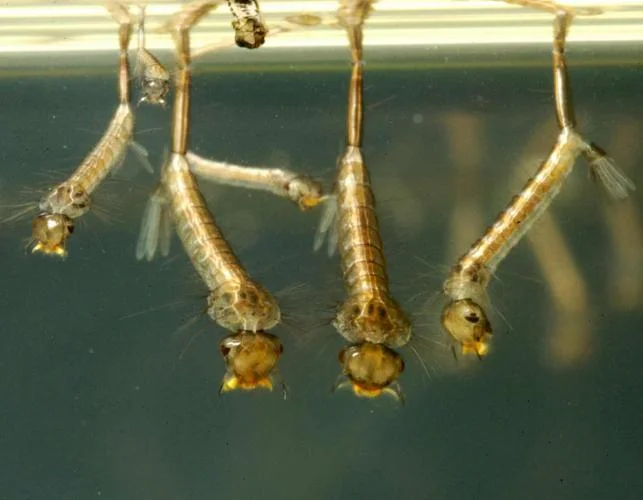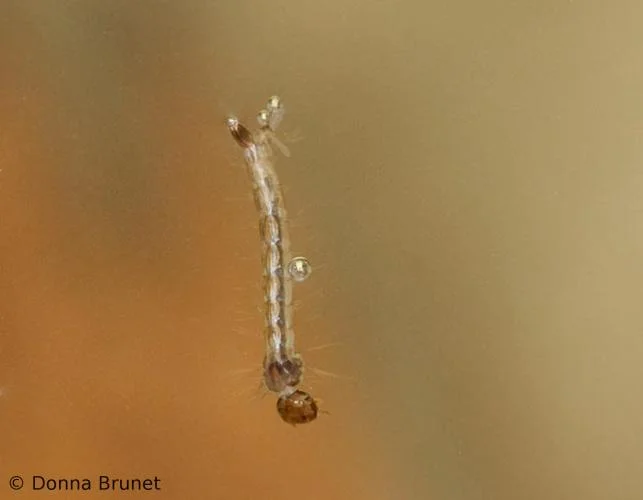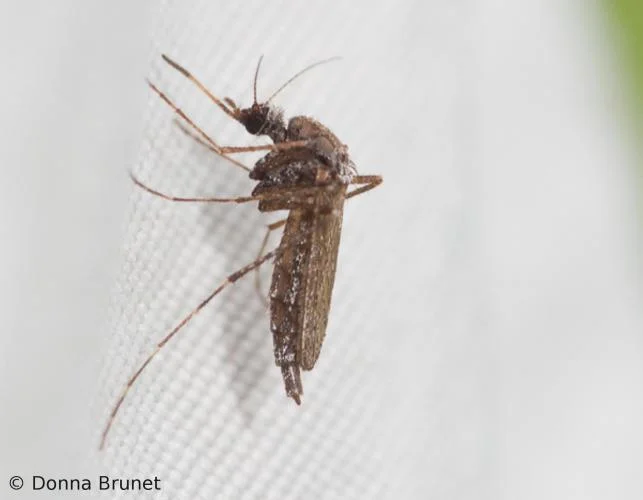Visualizations of Larvae Data
Tahun
2002
2003
2004
2005
2006
2007
2008
2009
2010
2011
2012
2013
2014
2015
2016
2017
2018
2019
2020
2021
2022
2023
2024
2025
Kabupaten/Kota
Pilih
KABUPATEN SIMEULUE
KABUPATEN ACEH SINGKIL
KABUPATEN ACEH SELATAN
KABUPATEN ACEH TENGGARA
KABUPATEN ACEH TIMUR
KABUPATEN ACEH TENGAH
KABUPATEN ACEH BARAT
KABUPATEN ACEH BESAR
KABUPATEN PIDIE
KABUPATEN BIREUEN
KABUPATEN ACEH UTARA
KABUPATEN ACEH BARAT DAYA
KABUPATEN GAYO LUES
KABUPATEN ACEH TAMIANG
KABUPATEN NAGAN RAYA
KABUPATEN ACEH JAYA
KABUPATEN BENER MERIAH
KABUPATEN PIDIE JAYA
KOTA BANDA ACEH
KOTA SABANG
KOTA LANGSA
KOTA LHOKSEUMAWE
KOTA SUBULUSSALAM
KABUPATEN NIAS
KABUPATEN MANDAILING NATAL
KABUPATEN TAPANULI SELATAN
KABUPATEN TAPANULI TENGAH
KABUPATEN TAPANULI UTARA
KABUPATEN TOBA SAMOSIR
KABUPATEN LABUHAN BATU
KABUPATEN ASAHAN
KABUPATEN SIMALUNGUN
KABUPATEN DAIRI
KABUPATEN KARO
KABUPATEN DELI SERDANG
KABUPATEN LANGKAT
KABUPATEN NIAS SELATAN
KABUPATEN HUMBANG HASUNDUTAN
KABUPATEN PAKPAK BHARAT
KABUPATEN SAMOSIR
KABUPATEN SERDANG BEDAGAI
KABUPATEN BATU BARA
KABUPATEN PADANG LAWAS UTARA
KABUPATEN PADANG LAWAS
KABUPATEN LABUHAN BATU SELATAN
KABUPATEN LABUHAN BATU UTARA
KABUPATEN NIAS UTARA
KABUPATEN NIAS BARAT
KOTA SIBOLGA
KOTA TANJUNG BALAI
KOTA PEMATANG SIANTAR
KOTA TEBING TINGGI
KOTA MEDAN
KOTA BINJAI
KOTA PADANGSIDIMPUAN
KOTA GUNUNGSITOLI
KABUPATEN KEPULAUAN MENTAWAI
KABUPATEN PESISIR SELATAN
KABUPATEN SOLOK
KABUPATEN SIJUNJUNG
KABUPATEN TANAH DATAR
KABUPATEN PADANG PARIAMAN
KABUPATEN AGAM
KABUPATEN LIMA PULUH KOTA
KABUPATEN PASAMAN
KABUPATEN SOLOK SELATAN
KABUPATEN DHARMASRAYA
KABUPATEN PASAMAN BARAT
KOTA PADANG
KOTA SOLOK
KOTA SAWAH LUNTO
KOTA PADANG PANJANG
KOTA BUKITTINGGI
KOTA PAYAKUMBUH
KOTA PARIAMAN
KABUPATEN KUANTAN SINGINGI
KABUPATEN INDRAGIRI HULU
KABUPATEN INDRAGIRI HILIR
KABUPATEN PELALAWAN
KABUPATEN S I A K
KABUPATEN KAMPAR
KABUPATEN ROKAN HULU
KABUPATEN BENGKALIS
KABUPATEN ROKAN HILIR
KABUPATEN KEPULAUAN MERANTI
KOTA PEKANBARU
KOTA D U M A I
KABUPATEN KERINCI
KABUPATEN MERANGIN
KABUPATEN SAROLANGUN
KABUPATEN BATANG HARI
KABUPATEN MUARO JAMBI
KABUPATEN TANJUNG JABUNG TIMUR
KABUPATEN TANJUNG JABUNG BARAT
KABUPATEN TEBO
KABUPATEN BUNGO
KOTA JAMBI
KOTA SUNGAI PENUH
KABUPATEN OGAN KOMERING ULU
KABUPATEN OGAN KOMERING ILIR
KABUPATEN MUARA ENIM
KABUPATEN LAHAT
KABUPATEN MUSI RAWAS
KABUPATEN MUSI BANYUASIN
KABUPATEN BANYU ASIN
KABUPATEN OGAN KOMERING ULU SELATAN
KABUPATEN OGAN KOMERING ULU TIMUR
KABUPATEN OGAN ILIR
KABUPATEN EMPAT LAWANG
KABUPATEN PENUKAL ABAB LEMATANG ILIR
KABUPATEN MUSI RAWAS UTARA
KOTA PALEMBANG
KOTA PRABUMULIH
KOTA PAGAR ALAM
KOTA LUBUKLINGGAU
KABUPATEN BENGKULU SELATAN
KABUPATEN REJANG LEBONG
KABUPATEN BENGKULU UTARA
KABUPATEN KAUR
KABUPATEN SELUMA
KABUPATEN MUKOMUKO
KABUPATEN LEBONG
KABUPATEN KEPAHIANG
KABUPATEN BENGKULU TENGAH
KOTA BENGKULU
KABUPATEN LAMPUNG BARAT
KABUPATEN TANGGAMUS
KABUPATEN LAMPUNG SELATAN
KABUPATEN LAMPUNG TIMUR
KABUPATEN LAMPUNG TENGAH
KABUPATEN LAMPUNG UTARA
KABUPATEN WAY KANAN
KABUPATEN TULANGBAWANG
KABUPATEN PESAWARAN
KABUPATEN PRINGSEWU
KABUPATEN MESUJI
KABUPATEN TULANG BAWANG BARAT
KABUPATEN PESISIR BARAT
KOTA BANDAR LAMPUNG
KOTA METRO
KABUPATEN BANGKA
KABUPATEN BELITUNG
KABUPATEN BANGKA BARAT
KABUPATEN BANGKA TENGAH
KABUPATEN BANGKA SELATAN
KABUPATEN BELITUNG TIMUR
KOTA PANGKAL PINANG
KABUPATEN KARIMUN
KABUPATEN BINTAN
KABUPATEN NATUNA
KABUPATEN LINGGA
KABUPATEN KEPULAUAN ANAMBAS
KOTA B A T A M
KOTA TANJUNG PINANG
KABUPATEN KEPULAUAN SERIBU
KOTA JAKARTA SELATAN
KOTA JAKARTA TIMUR
KOTA JAKARTA PUSAT
KOTA JAKARTA BARAT
KOTA JAKARTA UTARA
KABUPATEN BOGOR
KABUPATEN SUKABUMI
KABUPATEN CIANJUR
KABUPATEN BANDUNG
KABUPATEN GARUT
KABUPATEN TASIKMALAYA
KABUPATEN CIAMIS
KABUPATEN KUNINGAN
KABUPATEN CIREBON
KABUPATEN MAJALENGKA
KABUPATEN SUMEDANG
KABUPATEN INDRAMAYU
KABUPATEN SUBANG
KABUPATEN PURWAKARTA
KABUPATEN KARAWANG
KABUPATEN BEKASI
KABUPATEN BANDUNG BARAT
KABUPATEN PANGANDARAN
KOTA BOGOR
KOTA SUKABUMI
KOTA BANDUNG
KOTA CIREBON
KOTA BEKASI
KOTA DEPOK
KOTA CIMAHI
KOTA TASIKMALAYA
KOTA BANJAR
KABUPATEN CILACAP
KABUPATEN BANYUMAS
KABUPATEN PURBALINGGA
KABUPATEN BANJARNEGARA
KABUPATEN KEBUMEN
KABUPATEN PURWOREJO
KABUPATEN WONOSOBO
KABUPATEN MAGELANG
KABUPATEN BOYOLALI
KABUPATEN KLATEN
KABUPATEN SUKOHARJO
KABUPATEN WONOGIRI
KABUPATEN KARANGANYAR
KABUPATEN SRAGEN
KABUPATEN GROBOGAN
KABUPATEN BLORA
KABUPATEN REMBANG
KABUPATEN PATI
KABUPATEN KUDUS
KABUPATEN JEPARA
KABUPATEN DEMAK
KABUPATEN SEMARANG
KABUPATEN TEMANGGUNG
KABUPATEN KENDAL
KABUPATEN BATANG
KABUPATEN PEKALONGAN
KABUPATEN PEMALANG
KABUPATEN TEGAL
KABUPATEN BREBES
KOTA MAGELANG
KOTA SURAKARTA
KOTA SALATIGA
KOTA SEMARANG
KOTA PEKALONGAN
KOTA TEGAL
KABUPATEN KULON PROGO
KABUPATEN BANTUL
KABUPATEN GUNUNG KIDUL
KABUPATEN SLEMAN
KOTA YOGYAKARTA
KABUPATEN PACITAN
KABUPATEN PONOROGO
KABUPATEN TRENGGALEK
KABUPATEN TULUNGAGUNG
KABUPATEN BLITAR
KABUPATEN KEDIRI
KABUPATEN MALANG
KABUPATEN LUMAJANG
KABUPATEN JEMBER
KABUPATEN BANYUWANGI
KABUPATEN BONDOWOSO
KABUPATEN SITUBONDO
KABUPATEN PROBOLINGGO
KABUPATEN PASURUAN
KABUPATEN SIDOARJO
KABUPATEN MOJOKERTO
KABUPATEN JOMBANG
KABUPATEN NGANJUK
KABUPATEN MADIUN
KABUPATEN MAGETAN
KABUPATEN NGAWI
KABUPATEN BOJONEGORO
KABUPATEN TUBAN
KABUPATEN LAMONGAN
KABUPATEN GRESIK
KABUPATEN BANGKALAN
KABUPATEN SAMPANG
KABUPATEN PAMEKASAN
KABUPATEN SUMENEP
KOTA KEDIRI
KOTA BLITAR
KOTA MALANG
KOTA PROBOLINGGO
KOTA PASURUAN
KOTA MOJOKERTO
KOTA MADIUN
KOTA SURABAYA
KOTA BATU
KABUPATEN PANDEGLANG
KABUPATEN LEBAK
KABUPATEN TANGERANG
KABUPATEN SERANG
KOTA TANGERANG
KOTA CILEGON
KOTA SERANG
KOTA TANGERANG SELATAN
KABUPATEN JEMBRANA
KABUPATEN TABANAN
KABUPATEN BADUNG
KABUPATEN GIANYAR
KABUPATEN KLUNGKUNG
KABUPATEN BANGLI
KABUPATEN KARANG ASEM
KABUPATEN BULELENG
KOTA DENPASAR
KABUPATEN LOMBOK BARAT
KABUPATEN LOMBOK TENGAH
KABUPATEN LOMBOK TIMUR
KABUPATEN SUMBAWA
KABUPATEN DOMPU
KABUPATEN BIMA
KABUPATEN SUMBAWA BARAT
KABUPATEN LOMBOK UTARA
KOTA MATARAM
KOTA BIMA
KABUPATEN SUMBA BARAT
KABUPATEN SUMBA TIMUR
KABUPATEN KUPANG
KABUPATEN TIMOR TENGAH SELATAN
KABUPATEN TIMOR TENGAH UTARA
KABUPATEN BELU
KABUPATEN ALOR
KABUPATEN LEMBATA
KABUPATEN FLORES TIMUR
KABUPATEN SIKKA
KABUPATEN ENDE
KABUPATEN NGADA
KABUPATEN MANGGARAI
KABUPATEN ROTE NDAO
KABUPATEN MANGGARAI BARAT
KABUPATEN SUMBA TENGAH
KABUPATEN SUMBA BARAT DAYA
KABUPATEN NAGEKEO
KABUPATEN MANGGARAI TIMUR
KABUPATEN SABU RAIJUA
KABUPATEN MALAKA
KOTA KUPANG
KABUPATEN SAMBAS
KABUPATEN BENGKAYANG
KABUPATEN LANDAK
KABUPATEN MEMPAWAH
KABUPATEN SANGGAU
KABUPATEN KETAPANG
KABUPATEN SINTANG
KABUPATEN KAPUAS HULU
KABUPATEN SEKADAU
KABUPATEN MELAWI
KABUPATEN KAYONG UTARA
KABUPATEN KUBU RAYA
KOTA PONTIANAK
KOTA SINGKAWANG
KABUPATEN KOTAWARINGIN BARAT
KABUPATEN KOTAWARINGIN TIMUR
KABUPATEN KAPUAS
KABUPATEN BARITO SELATAN
KABUPATEN BARITO UTARA
KABUPATEN SUKAMARA
KABUPATEN LAMANDAU
KABUPATEN SERUYAN
KABUPATEN KATINGAN
KABUPATEN PULANG PISAU
KABUPATEN GUNUNG MAS
KABUPATEN BARITO TIMUR
KABUPATEN MURUNG RAYA
KOTA PALANGKA RAYA
KABUPATEN TANAH LAUT
KABUPATEN KOTA BARU
KABUPATEN BANJAR
KABUPATEN BARITO KUALA
KABUPATEN TAPIN
KABUPATEN HULU SUNGAI SELATAN
KABUPATEN HULU SUNGAI TENGAH
KABUPATEN HULU SUNGAI UTARA
KABUPATEN TABALONG
KABUPATEN TANAH BUMBU
KABUPATEN BALANGAN
KOTA BANJARMASIN
KOTA BANJAR BARU
KABUPATEN PASER
KABUPATEN KUTAI BARAT
KABUPATEN KUTAI KARTANEGARA
KABUPATEN KUTAI TIMUR
KABUPATEN BERAU
KABUPATEN PENAJAM PASER UTARA
KABUPATEN MAHAKAM HULU
KOTA BALIKPAPAN
KOTA SAMARINDA
KOTA BONTANG
KABUPATEN MALINAU
KABUPATEN BULUNGAN
KABUPATEN TANA TIDUNG
KABUPATEN NUNUKAN
KOTA TARAKAN
KABUPATEN BOLAANG MONGONDOW
KABUPATEN MINAHASA
KABUPATEN KEPULAUAN SANGIHE
KABUPATEN KEPULAUAN TALAUD
KABUPATEN MINAHASA SELATAN
KABUPATEN MINAHASA UTARA
KABUPATEN BOLAANG MONGONDOW UTARA
KABUPATEN SIAU TAGULANDANG BIARO
KABUPATEN MINAHASA TENGGARA
KABUPATEN BOLAANG MONGONDOW SELATAN
KABUPATEN BOLAANG MONGONDOW TIMUR
KOTA MANADO
KOTA BITUNG
KOTA TOMOHON
KOTA KOTAMOBAGU
KABUPATEN BANGGAI KEPULAUAN
KABUPATEN BANGGAI
KABUPATEN MOROWALI
KABUPATEN POSO
KABUPATEN DONGGALA
KABUPATEN TOLI-TOLI
KABUPATEN BUOL
KABUPATEN PARIGI MOUTONG
KABUPATEN TOJO UNA-UNA
KABUPATEN SIGI
KABUPATEN BANGGAI LAUT
KABUPATEN MOROWALI UTARA
KOTA PALU
KABUPATEN KEPULAUAN SELAYAR
KABUPATEN BULUKUMBA
KABUPATEN BANTAENG
KABUPATEN JENEPONTO
KABUPATEN TAKALAR
KABUPATEN GOWA
KABUPATEN SINJAI
KABUPATEN MAROS
KABUPATEN PANGKAJENE DAN KEPULAUAN
KABUPATEN BARRU
KABUPATEN BONE
KABUPATEN SOPPENG
KABUPATEN WAJO
KABUPATEN SIDENRENG RAPPANG
KABUPATEN PINRANG
KABUPATEN ENREKANG
KABUPATEN LUWU
KABUPATEN TANA TORAJA
KABUPATEN LUWU UTARA
KABUPATEN LUWU TIMUR
KABUPATEN TORAJA UTARA
KOTA MAKASSAR
KOTA PAREPARE
KOTA PALOPO
KABUPATEN BUTON
KABUPATEN MUNA
KABUPATEN KONAWE
KABUPATEN KOLAKA
KABUPATEN KONAWE SELATAN
KABUPATEN BOMBANA
KABUPATEN WAKATOBI
KABUPATEN KOLAKA UTARA
KABUPATEN BUTON UTARA
KABUPATEN KONAWE UTARA
KABUPATEN KOLAKA TIMUR
KABUPATEN KONAWE KEPULAUAN
KABUPATEN MUNA BARAT
KABUPATEN BUTON TENGAH
KABUPATEN BUTON SELATAN
KOTA KENDARI
KOTA BAUBAU
KABUPATEN BOALEMO
KABUPATEN GORONTALO
KABUPATEN POHUWATO
KABUPATEN BONE BOLANGO
KABUPATEN GORONTALO UTARA
KOTA GORONTALO
KABUPATEN MAJENE
KABUPATEN POLEWALI MANDAR
KABUPATEN MAMASA
KABUPATEN MAMUJU
KABUPATEN MAMUJU UTARA
KABUPATEN MAMUJU TENGAH
KABUPATEN MALUKU TENGGARA BARAT
KABUPATEN MALUKU TENGGARA
KABUPATEN MALUKU TENGAH
KABUPATEN BURU
KABUPATEN KEPULAUAN ARU
KABUPATEN SERAM BAGIAN BARAT
KABUPATEN SERAM BAGIAN TIMUR
KABUPATEN MALUKU BARAT DAYA
KABUPATEN BURU SELATAN
KOTA AMBON
KOTA TUAL
KABUPATEN HALMAHERA BARAT
KABUPATEN HALMAHERA TENGAH
KABUPATEN KEPULAUAN SULA
KABUPATEN HALMAHERA SELATAN
KABUPATEN HALMAHERA UTARA
KABUPATEN HALMAHERA TIMUR
KABUPATEN PULAU MOROTAI
KABUPATEN PULAU TALIABU
KOTA TERNATE
KOTA TIDORE KEPULAUAN
KABUPATEN FAKFAK
KABUPATEN KAIMANA
KABUPATEN TELUK WONDAMA
KABUPATEN TELUK BINTUNI
KABUPATEN MANOKWARI
KABUPATEN SORONG SELATAN
KABUPATEN SORONG
KABUPATEN RAJA AMPAT
KABUPATEN TAMBRAUW
KABUPATEN MAYBRAT
KABUPATEN MANOKWARI SELATAN
KABUPATEN PEGUNUNGAN ARFAK
KOTA SORONG
KABUPATEN MERAUKE
KABUPATEN JAYAWIJAYA
KABUPATEN JAYAPURA
KABUPATEN NABIRE
KABUPATEN KEPULAUAN YAPEN
KABUPATEN BIAK NUMFOR
KABUPATEN PANIAI
KABUPATEN PUNCAK JAYA
KABUPATEN MIMIKA
KABUPATEN BOVEN DIGOEL
KABUPATEN MAPPI
KABUPATEN ASMAT
KABUPATEN YAHUKIMO
KABUPATEN PEGUNUNGAN BINTANG
KABUPATEN TOLIKARA
KABUPATEN SARMI
KABUPATEN KEEROM
KABUPATEN WAROPEN
KABUPATEN SUPIORI
KABUPATEN MAMBERAMO RAYA
KABUPATEN NDUGA
KABUPATEN LANNY JAYA
KABUPATEN MAMBERAMO TENGAH
KABUPATEN YALIMO
KABUPATEN PUNCAK
KABUPATEN DOGIYAI
KABUPATEN INTAN JAYA
KABUPATEN DEIYAI
KOTA JAYAPURA
We have collected samples of larvae presence, and we have found that the most common larvae
in our
area is the mosquito. You can see the data we have collected below.
Larvae data is empty
*
This map shows the location of the samples collected by the user and it all have been
clustered to make it easier to see
Larvae Information
This is an immature life stage of an insect. But some people also use the term to
describe the early
life stages of fish, frogs or other animals. Usually, the larva looks very different
from the adult it
will become. A caterpillar, for example, doesn’t look much like a butterfly. The
larval stage of the
insect may also have completely different organs and structures than the adult, as
well as a different
diet. A frog larva has gills and breathes water, while the adult frog will come to
the surface to fill
its lungs with air.
Larvae (the plural of larva) are often adapted to very different environments than
they will live in
as adults. Adult mosquitoes are airborne, for instance. But their larvae hang out in
small pockets of
still water. There they gobble up algae and bacteria living on the water’s surface
Key identifiers of larval mosquitoes
Large head and thorax; narrow, wormlike abdomen.
Hang just below the water surface, breathing air through tubes at the end of the abdomen.
When disturbed, they wriggle or squirm downward with jerking movements.
Pupal stage is comma-shaped; also hangs just under the water surface.
Aquatic, usually in still or stagnant water, including swampy areas, puddles, gutters, and
discarded car tires.
Life Cycle
After a blood meal, females rest a few days and develop 100-400 or more eggs. These they usually
deposit on the water, flying close and tapping the abdomen onto the surface. Eggs hatch in a few
days and spend about a week as “wrigglers.” The pupal stage lasts 2-3 days, after which adults
emerge, climbing out onto the water surface. Adults mate within a few days, and females begin
seeking blood. The life cycle usually takes a few weeks, but when conditions are right, it can
take only 10 days.
We have collected samples of larvae from different places and have analyzed them. The data is shown
in the form of graphs and charts below.



